#satellite cluster
Text

The Satellite Cluster (NGC 2244) at the heart of the Rosette Nebula (NGC 2237) // Andrea Iorio
#astronomy#astrophotography#nebula#emission nebula#star-forming region#rosette nebula#NGC 2237#NGC 2238#NGC 2239#NGC 2246#Sh2-275#stars#star cluster#open cluster#satellite cluster#NGC 2244#monoceros
186 notes
·
View notes
Text

the Satellite Cluster in the Rosette Nebula
NGC 2244
45 notes
·
View notes
Text


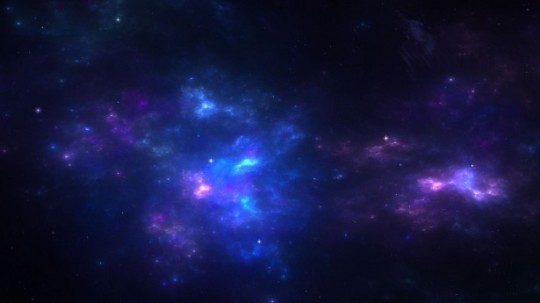
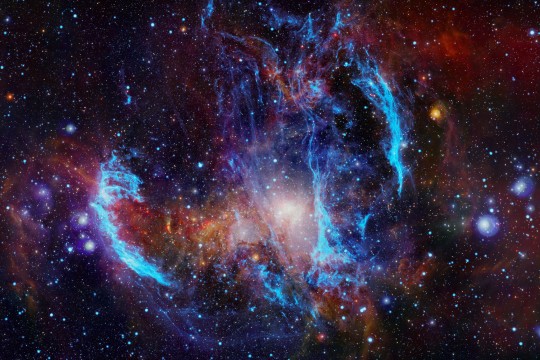
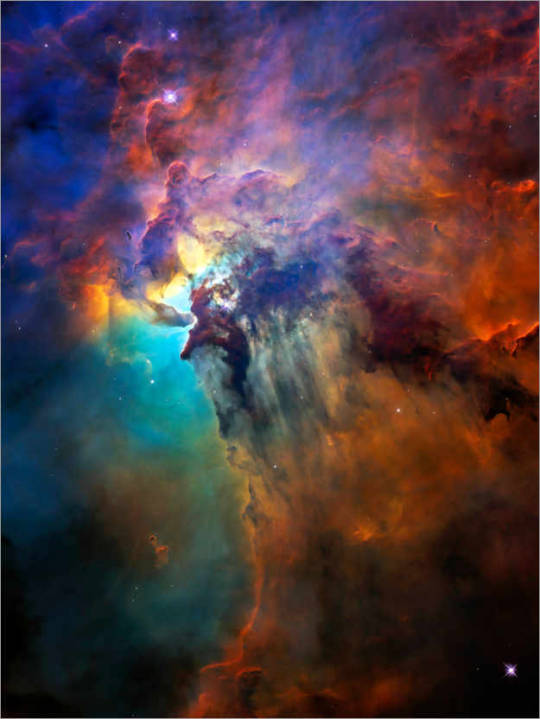


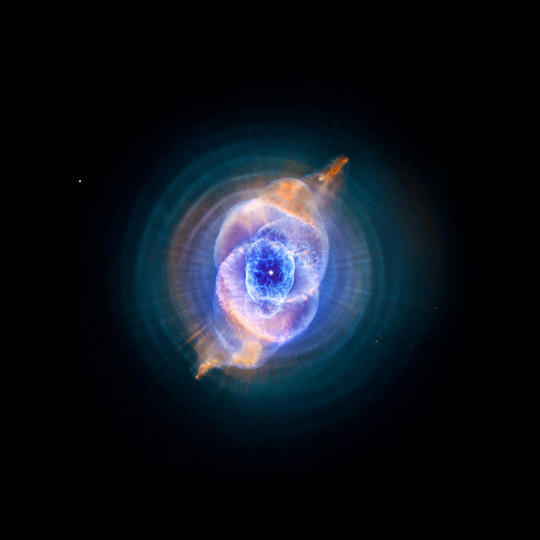
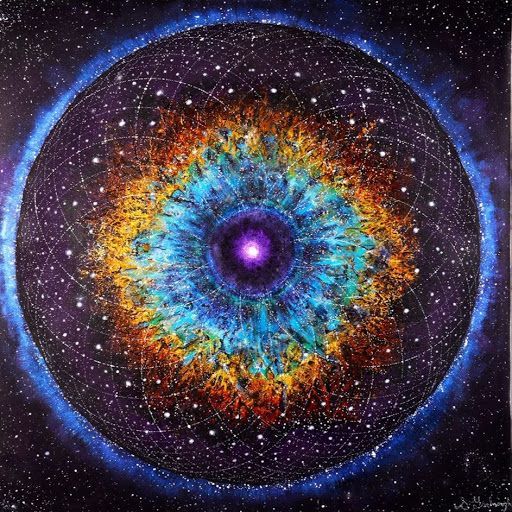

#galaxy#nebula#solar system#universe#deep space#space#nothingness#emptiness#star system#nasa#satellite#star cluster#black hole#gods eye
42 notes
·
View notes
Text

THE INFANCY OF STARS.
PIC(S) INFO: Spotlight on Infant NGC 602, a young, bright open cluster of infant stars located in the Small Magellanic Cloud, a satellite galaxy to the Milky Way. It is embedded in a nebula known as N90.
- Object Name: NGC 602, N90
- Object Description: Cluster within Star-Forming Region in the Small Magellanic Cloud.
- Constellation: Tucana.
- Distance: Approximately 196,000 light-years (61 kiloparsecs).
- Dimensions: This image is roughy 3 arcminute (180 light-years or 55 parsecs) wide.
Source: www.flickr.com/photos/lumase/3063774826.
#Infant Stars#Star Clusters#NGC 602#Small Magellanic Cloud#Space is Deep#Hubble Space Telescope#Milky Way#Milky Way Galaxy#Nebula#N90#Satellite Galaxy#Astrophotography#Outer Space#Tucana Constellation#NGC 602 N90
4 notes
·
View notes
Text
wicked and lazy bastard in my heart whispering to me "the tokyo cityscape can just be boxes" shut up king I appreciate the input but when the cylinder of the water tower turns into a box that's just going a little TOO far my love

like!!! I drew better pictures for breaking stasis!! come on don't be lazy now. don't be lazy now!!! ! !
#just thinking thoughts...#I fully intend on fleshing out the cityscape. don't worry.#it's just like. this IS actually pretty good I think. compositionwise.#I think the cluster of taller buildings in the distance pulls it together#real cities are like that!! I think living in taipei for a while helped me get a better idea of what cityscapes look like#unfortunately it also makes me want to slap mountains everywhere. and well I AM just looking at tokyo on the satellite view on google maps#but like. there doesn't seem to be THAT many mountains I don't think#we need an in between of street view and satellite view. 30th floor view.#they were not kidding when they said write what you know... I think I could draw a much more characteristic taipei.#I mean it's a distinctive place. the whole 7 bridges leading from new taipei to taipei I mean.#WAIT I'M STUPID. I THINK I LOOK UP PICTURES OF TOKYO. LIKE PHOTOGRAPHS. LMAO#<- guy who is stupid ? ? ? ? ? ? ?#I like that my layers are a lot more organized this time around.#see I can turn off everything in the foreground and just complain about the bg. spoiler free...#NOT THAT LIKE. I THINK ANYONE CARES. OTHER THANME ! ! !
3 notes
·
View notes
Text
DP x DC Prompt #04 b
Space Elritch Deity Danny
The place orbit that the JL was planning to build the watchtower was big and in an orbital place that didn't interfere with any other satellite. As it's rotation will be following Earth's natural orbit and rotation as the moon.
But once all of their preparations were done, the Green Lantern Corps where preparing to move the watchtower when suddenly a disturbance in the sky stopped them from moving further. As deep dark blackish figure started to form from within the sky; its body, a cluster of stars and constellations in it's chest, and clawed hands were a different color (white in shine as if looking at the sun), and lastly, a white silky mane adorned with an ice crown and black horns as it's face was hidden by a blackness soo surreal that the only other characteristic were his hazardous green eyes.
Why are you moving those to space? The creature said, it's voice screeching as it leaned forward in inquiry but no one could understand it, Green Lantern tried to speak to it but sadly his own ring could decrypt it, and all of the Justice League was in awe and veiled concentrated terror as they witnessed such a lovecraft creature.
Why do such thing? Have you asked me if I allow it?
“Wait hold on! Blimmey studd!! I might found a solution” cursed Constantine being the one to be there when the creature appeared; quickly doing some sigils to make the creature speak the language of the living “now, come on big fella what do you want”
Why are you trashing my domain, humans? The voice of the creature intones making the JL shiver at the potency of the words it spoke did you even ask me if I would allow it? It asked again, anger now in its voice, a wisp of cold air and pressure onto them Ask and you receive, I'm Phantom lord of the dead and the king of the infinite realms and lord of the space and infinity
(aaand that's when my dream cuts, so sorry for the cliffhanger)
641 notes
·
View notes
Photo

2024 March 8
The Tarantula Zone
Image Credit & Copyright: Processing - Robert Gendler
Data - Hubble Tarantula Treasury, European Southern Observatory, James Webb Space Telescope, Amateur Sources
Explanation: The Tarantula Nebula, also known as 30 Doradus, is more than a thousand light-years in diameter, a giant star forming region within nearby satellite galaxy the Large Magellanic Cloud. About 180 thousand light-years away, it's the largest, most violent star forming region known in the whole Local Group of galaxies. The cosmic arachnid sprawls across this magnificent view, an assembly of image data from large space- and ground-based telescopes. Within the Tarantula (NGC 2070), intense radiation, stellar winds, and supernova shocks from the central young cluster of massive stars cataloged as R136 energize the nebular glow and shape the spidery filaments. Around the Tarantula are other star forming regions with young star clusters, filaments, and blown-out bubble-shaped clouds. In fact, the frame includes the site of the closest supernova in modern times, SN 1987A, at lower right. The rich field of view spans about 2 degrees or 4 full moons in the southern constellation Dorado. But were the Tarantula Nebula closer, say 1,500 light-years distant like the Milky Way's own star forming Orion Nebula, it would take up half the sky.
∞ Source: apod.nasa.gov/apod/ap240308.html
127 notes
·
View notes
Text
In Bad Taste Part 2
"Four feet?!" The entirety of the league at the meeting is up on their feet. "Why so fast?"
"Do you have any pictures of the orb or the bodies? Were they dead," Batman asks as he pulls up the location of the League's hideout via a satellite trying to gain visual of what she was talking about.
"All but one. Why did you send Hood? I thought he was on your no go list."
"Hood's been getting better, he was the most logical one to infiltrate the League; he was already in good graces with them when Talia used the pits to bring him back. Being on my no go list made it seem like he was no longer associated with me. I have visual, why did they have the orb out in the middle of the courtyard?"
"I have some footage of the scene, they appeared to have been trying to cast some kind of spell to link the orb with other locations or maybe to expand its radius of effect. It's not completed," Zatanna places a device into a port on the table and pictures of a large magic circle surrounds the larger orb. The next few pictures were of the corpses lined up, some of the faces looking familiar to Bruce.
"So Ras is gone then, that's the man right there."
"So it appears," Zatanna agrees, switching the screen to one of the orb, with it being so big now details not seen are clear.
Superman looks at the picture closely, "Is it just me or does that look like a a bunch of stars?"
Batman says nothing as he runs the image through multiple star charting programs, "You're correct, Superman. I'm getting multiple confirmations; Perseus-Pisces, Pisces-Cetus, Ursa Major, the Centaurus Cluster, The Milky Way, Sto-Oa, Rao. It keeps going, it shows to be every star in our sky as well."
"Rao," Superman asks, looking for the familiar star by its formation. "How old is this thing?"
"We should contact Hal and the lanterns to let them know. This could be one of theirs or maybe the Guardians know what it is?"
"I'm sending the message now," Batman types away at the keypad, "While we wait for them I'm going to check on Hood."
"We'll come with you," Diana says as Bruce moves the files to his personal device.
"Do as you wish. Zatanna bring in Constantine, we may need his help."
***
The Justice League have arrived at the compound just thirty minutes later and it is swarming with more assassins and goons. Talia's there giving orders, "Remember! Squad D, do not go near the artifact! Everyone else is fine to approach, I want this circle destroyed post haste!"
Batman had snuck his way into their camp and put Talia in a hold, "Why are you here, Talia?"
"Br-" Batman tightens his hold painfully, "Batman, I suppose you're here for Jason?"
"Where is he?!"
"He's safe, you don't want to see him right now. He's back to the way he was when I first found him. It's not a pretty sight."
"Fine, what's with the orb then? You didn't answer my question, I know your father is dead, why are you here?"
"Same reason you are I suppose, I'm putting a stop to father's plans for this artifact. He planned on linking it with every Lazarus Pit on the planet, he believed this to be the heart of the god who made the pits and wished to bring it back. To bad for him he didn't know what I now know; it's not just the Lazarus waters it's absorbing, it's also draining the energy from those who have died and come back via other means. It hasn't killed anyone yet, just makes them unable to move until they're removed from its radius."
Batman releases her and taps his comms, "Batman reporting in, stay away from the compound."
Superman's comms respond, "I heard, I was able to pull myself back before I couldn't move. Felt like the life of me was being drained. Zatanna and Constantine seem to be fine, Wonder Woman says it feels like hades is staring into her soul from here."
"It feels like it's looking at me," Shazam pipes in.
"Noted, fill them in on what's going on. We need some league members who haven't been resurrected before. Let Talia's men destroy the circle then we can figure out a way to get it off the planet and away from the pits."
"Well aren't you the lucky lot," Hal's voice comes in over their comms, "Calvary's here. I can get it off planet for you."
______________________________________________
And there we go, part 2 like I promised. Also you were close @victoria-has-no-secret but it's ALL of the people who've been resurrected not just the pits. mwahahaha Now to get the tag list out of the way. hope I'm doing this right... As I was typing this up, it seemed like I made the Orb sound like an SCP... hmm, thoughts for future works.
@mnemovoid @may-rbi @cugzarui @ekatkit @farmercale @blackroserelina @justwannabecat @dragonborne-writer @aikoiya @chrysanthemum9484
#danny phantom#dp x dc crossover#dp x dc#dc x dp#justice league#full ghost danny#the observants are totes dead#superman#batman#wonder woman#zatanna#green lantern#shazam#ghost king au#danny fenton#fanfiction#hey i promised#story
681 notes
·
View notes
Photo

NGC 3521: Galaxy in a Bubble : Gorgeous spiral galaxy NGC 3521 is a mere 35 million light-years away, toward the northern springtime constellation Leo. Relatively bright in planet Earth's sky, NGC 3521 is easily visible in small telescopes but often overlooked by amateur imagers in favor of other Leo spiral galaxies, like M66 and M65. It's hard to overlook in this colorful cosmic portrait though. Spanning some 50,000 light-years the galaxy sports characteristic patchy, irregular spiral arms laced with dust, pink star forming regions, and clusters of young, blue stars. This deep image also finds NGC 3521 embedded in fainter, gigantic, bubble-like shells. The shells are likely tidal debris, streams of stars torn from satellite galaxies that have undergone mergers with NGC 3521 in the distant past. via NASA
764 notes
·
View notes
Text

ASCA X-Ray Observatory - February 20th, 1996.
"February 20th, 1996 marks the third anniversary of the launch of the Advanced Satellite for Cosmology and Astrophysics (ASCA; renamed from Astro D when launched). ASCA, seen here superposed on galaxy M31, is a Japanese satellite for which NASA has provided some scientific equipment. ASCA carries four large-area X-ray telescopes. At the focus of two of the telescopes is a Gas Imaging Spectrometer (GIS), while a Solid-state Imaging Spectrometer (SIS) is at the focus of the other two. ASCA has provided evidence that high energy cosmic rays are formed in the expanding gas from a supernova. During ASCA's three years of operation, it had also yielded valuable data on quasars, supernova remnants, dwarf novae, pulsars, clusters of galaxies, and the mysterious X-ray background radiation that appears to come from all directions."
46 notes
·
View notes
Text
Eddie's mama always used to say that the night sky over Orion was the most beautiful sight in the Alpha Quadrant. She'd tuck him into her side at bedtime and tell him about the way the dim red lamps clustered in the markets never stopped you being able to see the bright stars and the swirling lights of the nearby nebula, so it was just a shimmering sea of red below and a shimmering sea of blue-purple-gold above, light and dark all mixed up together so you couldn’t tell the difference.
Eddie's never laid eyes on it himself, but he always liked hearing her talk about it. He asked Wayne about it once or twice, when he was younger, but Wayne grew up like Eddie's old man: roaming around systems farther and farther from the Orion sector, following whatever work he could get. Eddie's old man was a sight less choosy about which jobs he'd take than Wayne was, which is why Eddie’s been living with Wayne for about as long as he can remember.
Starfleet offered to help Eddie relocate, after everything went down. They even offered to make sure he got to Orion okay, if he'd wanted it, to reconnect with his heritage or whatever.
He hadn't wanted it. But he also hadn't really wanted to stay where he’d been planetside, where his official job was helping Wayne out with the Starfleet Academy’s satellite campus canteen, and his unofficial job was procuring various not-Starfleet-approved odds and ends for cadets looking for something to help them weather the pressures of the Academy.
Commander Hopper, newly returned from the dead, had made it pretty damn clear that Eddie's sideline was no longer going to be an option, anyway.
So he'd talked to Wayne, and he'd talked to Commander Hopper, and he'd even talked a little to Nancy Wheeler because she's smart as hell—everyone knows she's one of the top candidates for joining, and a symbiont is going to snatch her up any day now.
After all that talking, he still doesn’t really know what to do, so Hopper sighs and tells him he doesn’t have to decide right away.
“I just,” he says later, to Robin. “I don’t know what I’m doing here, but it’s not like I got any big plans somewhere else, either. Plus, everyone on the damn station still looks at me like I’m a murderer. Or at least Orion filth.”
Robin sort of gets it, a little bit, but she’s Starfleet. It’s different in uniform, even for half-Andorians who once crashed a runabout into the side of the base.
“You could always apply to the Academy,” she says, but she’s got a grimace like she already knows that’s never gonna happen. Even if they’d take him, he’d have no chance of making it through the course, not when he’d squeaked through the standard Federation educational system by the skin of his teeth. He can’t really picture himself in the uniform anyway. Not his style at all.
“Think those feral bat creatures gobbled up whatever mutant gland makes people want to join Starfleet,” he just says, pulling up his shirt and prodding at his wounds to make her laugh.
Of course that’s when Steve Harrington walks in, when Eddie’s got his shirt hiked up around his armpits and all his shiny new scars are on full display.
The scars are still a lurid emerald going brownish-purple around the edges. When he’d first woken up in the medbay, he’d been told that they’d probably fade with time, but might never go away despite all the intensive dermal regeneration treatments he’s still going in for every week. He doesn’t mind so much, honestly; he’s never been too hung up on his looks. People who want to fuck an exotic, dangerous Orion aren’t exactly going to be put off by scars, so who knows? This might actually help him out a little in the dive bars he tends to haunt when he gets skin-hungry enough.
But it’s definitely not doing him any favors now, as Steve pauses in the doorway, looking kind of confused. Eddie quickly yanks his shirt back down, hiding a wince. Steve’s already seen him at his worst, Steve’s not a fucking option for a million reasons, so it’s not like it matters, but—anyway.
“Junior Lieutenant Harrington,” he says. “Heard about the promotion. Congrats.”
“Thanks,” says Steve. “I think it’s like, you get three or four concussions saving the station, and the system just puts the promotion through automatically.”
“I can’t wait to see what it takes for you to make Lieutenant, non-junior edition,” says Robin. “Do you think you’ll need to be in an actual coma?”
“Probably, at this rate,” Steve says, wandering over and leaning into her side companionably. “Don’t think anything’s really going to change aside from the pay, though.”
“Nah, just wait.” Eddie rocks back on his heels, grinning at Steve. “You’ll be battling evil wormhole monsters on perilous away missions and teaching alien babes how to love before you know it. The daring adventures of Spaceman Steve! Eat your heart out, James T. Kirk.”
“Henderson still thinks you’re gonna join up too,” says Steve.
“What, Starfleet? Where the hell’d he get that idea?”
“Ugh, we were just talking about that,” groans Robin. “Eddie’s still being stubborn about it.”
Eddie crosses his arms. “Wheeler’s on my side.”
“No shit, Eddie. You’re his…game lord, or whatever.”
“What—no, dumbass, like I’d ever ask Cadet Wheeler for advice. Nancy goddamn Wheeler agrees I’d make a shit Starfleet officer, so there. Besides,” Eddie says, shifting a little uncomfortably. “I dunno if I could handle not living planetside. I know you guys have missions and stuff, but it’s not the same, is it? You live on a floating hunk of metal, like, ninety-nine percent of your life. Don’t know if that’s for me.”
“Didn’t figure you for the kind of guy who wanted to put down roots,” says Steve.
Eddie rolls his eyes. “It’s not about roots. Don’t you ever feel weird about not living somewhere…you know, real? Everything around you is made exactly for you.”
“And that’s…bad?” says Steve. His brow’s furrowed like he’s actually asking.
“Not if you don’t think it is.” Eddie shrugs. “I just don’t think it works for me.”
“Okay, yeah, we get it,” says Robin. “You’re off to the next adventure, whatever that ends up being. Better cash in your chips soon, though; Hopper’s not gonna have that recently-reanimated pull forever.”
Steve frowns thoughtfully. “What about running, like, a transport ship or whatever? Is that weird with the, uh, pirate thing?”
“Little bit,” says Eddie. “But that’s…not the worst idea I’ve ever heard.”
Actually, the more he thinks about it, the better it sounds. Some shiny little skiff, just big enough for him and some cargo, zipping around from planet to satellite to base, hanging out in random ports. It’ll be a little rough to go solo, and jobs might be a little scarcer than they’d be for a human or something, but then again, he’s used to that.
No, it’s not the worst idea he’s ever heard.
#STxST AU#steddie#okay I've tried a few different angles on this one but I think this might be the one that sticks. hopefully. who knows.#I just really want to write Eddie as basically Orion-diaspora!Kasidy Yates#(I've mostly just watched DS9 + DIS + LD + TOS with a smattering of TNG/VOY)#(and I saw the TOS movies many years ago but only the first reboot movie)#(so...sorry if I screw any universe details up! memory-alpha can only go so far!)#fic: hazy cosmic jive
105 notes
·
View notes
Video
Hubble Uncovers a Celestial Fossil by NASA's Marshall Space Flight Center
Via Flickr:
This densely populated group of stars is the globular cluster NGC 1841, which is part of the Large Magellanic Cloud (LMC), a satellite galaxy of our Milky Way galaxy that lies about 162,000 light-years away. Satellite galaxies are bound by gravity in orbits around a more massive host galaxy. We typically think of the Andromeda Galaxy as our galaxy’s nearest galactic companion, but it is more accurate to say that Andromeda is the nearest galaxy that is not in orbit around the Milky Way galaxy. In fact, dozens of satellite galaxies orbit our galaxy and they are far closer than Andromeda. The largest and brightest of these is the LMC, which is easily visible to the unaided eye from the southern hemisphere under dark sky conditions away from light pollution. The LMC is home to many globular clusters. These celestial bodies fall somewhere between open clusters – which are much less dense and tightly bound – and small, compact galaxies. Increasingly sophisticated observations reveal the stellar populations and characteristics of globular clusters are varied and complex, and we have yet to fully understand how these tightly packed groups of stars form. However, there are certain consistencies across all globular clusters: they are very stable and hold their shape for a long time, which means they are generally very old and contain large numbers of very old stars. Globular clusters are akin to celestial ‘fossils.’ Just as fossils provide insight into the early development of life on Earth, globular clusters such as NGC 1841 can provide insights into very early star formation in galaxies. Credit: ESA/Hubble & NASA, A. Sarajedini #NASA #NASAGoddard #NASAMarshall #NASAGoddard #HubbleSpaceTelescope #HST #ESA #globularcluster Read more Read more about NASA’s Hubble Space Telescope NASA Media Usage Guidelines
#NASA#Goddard Space Flight Center#GSFC#Solar System & Beyond#ESA#European Space Agency#universe#space#astronomy#Marshall Space Flight Center#MSFC#Hubble Space Telescope#HST#Hubble#globular cluster#NGC 1841#star cluster#globular star cluster#stars#Watch
20 notes
·
View notes
Video
No zoom by European Space Agency
Via Flickr:
This image shows a globular cluster known as NGC 1651. Like the object in another recent Picture of the Week, it is located about 162 000 light-years away in the largest and brightest of the Milky Way’s satellite galaxies, the Large Magellanic Cloud (LMC). A notable feature of this image is that the globular cluster almost fills the entire image, even though globular clusters are only about 10 to 300 light-years in diameter (NGC 1651 has a diameter of roughly 120 light-years). In contrast, there are numerous Hubble Pictures of the Week that feature entire galaxies — which can be tens or hundreds of millions of light-years in diameter — that also more or less fill the whole image. A common misconception is that Hubble and other large telescopes manage to observe wildly differently sized celestial objects by zooming in on them, as one would with a specialised camera here on Earth. However, whilst small telescopes might have the option to zoom in and out to a certain extent, large telescopes do not. Each telescope’s instrument has a fixed ‘field of view’ (the size of the region of sky that it can observe in a single observation). For example, the ultraviolet/visible light channel of Hubble’s Wide Field Camera 3 (WFC3), the channel and instrument that were used to collect the data used in this image, has a field of view roughly one twelfth the diameter of the Moon as seen from Earth. Whenever WFC3 makes an observation, that is the size of the region of sky that it can observe. The reason that Hubble can observe objects of such wildly different sizes is two-fold. Firstly, the distance to an object will determine how big it appears to be from Earth, so entire galaxies that are relatively far away might take up the same amount of space in the sky as a globular cluster like NGC 1651 that is relatively close by. In fact, there's a distant spiral galaxy lurking in this image, directly left of the cluster — though undoubtedly much larger than this star cluster, it appears small enough here to blend in with foreground stars! Secondly, multiple images spanning different parts of the sky can be mosaiced together to create single images of objects that are too big for Hubble’s field of view. This is a very complex task and is not typically done for Pictures of the Week, but it has been done for some of Hubble’s most iconic images. [Image Description: A spherical collection of stars, which fills the whole view. The stars merge into a bright, bluish core in the centre, and form a sparse band around that out to the edges of the image. A few stars lie in front of the cluster, with visible diffraction spikes. The background is dark black.] Credits: ESA/Hubble & NASA, L. Girardi, F. Niederhofer; CC BY 4.0
#NGC 1651#ESA#European Space Agency#Space#Universe#Cosmos#Space Science#Science#Space Technology#Tech#Technology#HST#Hubble Space Telescope#Galaxy#Supernova#NASA#Creative Commons#Stars#Star#Globular Cluster#flickr
20 notes
·
View notes
Text
2024 March 8
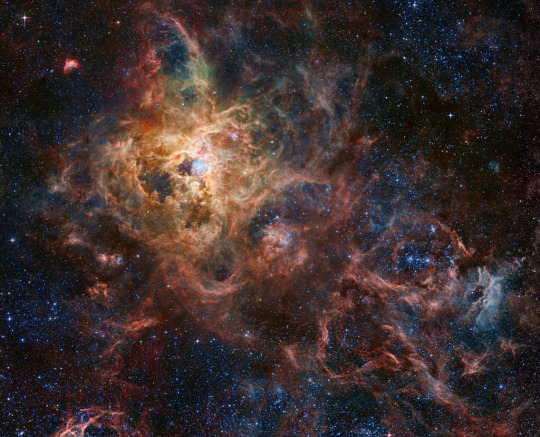
The Tarantula Zone
Image Credit & Copyright: Processing - Robert Gendler
Data - Hubble Tarantula Treasury, European Southern Observatory, James Webb Space Telescope, Amateur Sources
Explanation: The Tarantula Nebula, also known as 30 Doradus, is more than a thousand light-years in diameter, a giant star forming region within nearby satellite galaxy the Large Magellanic Cloud. About 180 thousand light-years away, it's the largest, most violent star forming region known in the whole Local Group of galaxies. The cosmic arachnid sprawls across this magnificent view, an assembly of image data from large space- and ground-based telescopes. Within the Tarantula (NGC 2070), intense radiation, stellar winds, and supernova shocks from the central young cluster of massive stars cataloged as R136 energize the nebular glow and shape the spidery filaments. Around the Tarantula are other star forming regions with young star clusters, filaments, and blown-out bubble-shaped clouds. In fact, the frame includes the site of the closest supernova in modern times, SN 1987A, at lower right. The rich field of view spans about 2 degrees or 4 full moons in the southern constellation Dorado. But were the Tarantula Nebula closer, say 1,500 light-years distant like the Milky Way's own star forming Orion Nebula, it would take up half the sky.
#not astrology#astronomers#astronaut#astro observations#outer space#space#stars#star#constellations#constellation#black holes#astronomy#nebula#light
24 notes
·
View notes
Text
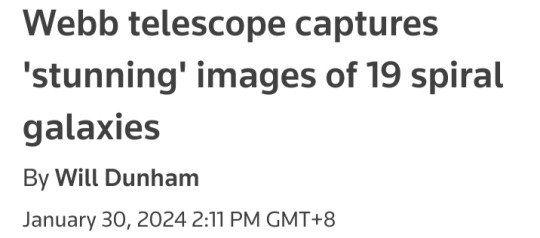
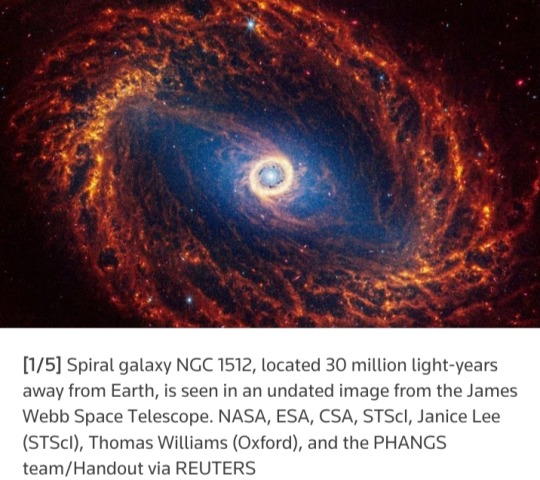
WASHINGTON, Jan 29 (Reuters) — A batch of newly released images captured by the James Webb Space Telescope show in remarkable detail 19 spiral galaxies residing relatively near our Milky Way, offering new clues on star formation as well as galactic structure and evolution.
The images were made public on Monday by a team of scientists involved in a project called Physics at High Angular resolution in Nearby GalaxieS (PHANGS) that operates across several major astronomical observatories.
The closest of the 19 galaxies is called NGC5068, about 15 million light years from Earth, and the most distant of them is NGC1365, about 60 million light years from Earth.
A light year is the distance light travels in a year, 5.9 trillion miles (9.5 trillion km).
The James Webb Space Telescope (JWST) was launched in 2021 and began collecting data in 2022, reshaping the understanding of the early universe while taking wondrous pictures of the cosmos.
The orbiting observatory looks at the universe mainly in the infrared.
The Hubble Space Telescope, launched in 1990 and still operational, has examined it primarily at optical and ultraviolet wavelengths.
Spiral galaxies, resembling enormous pinwheels, are a common galaxy type. Our Milky Way is one.
The new observations came from Webb's Near-Infrared Camera (NIRCam) and Mid-Infrared Instrument (MIRI).
They show roughly 100,000 star clusters and millions or perhaps billions of individual stars.
"These data are important as they give us a new view on the earliest phase of star formation," said University of Oxford astronomer Thomas Williams, who led the team's data processing on the images.
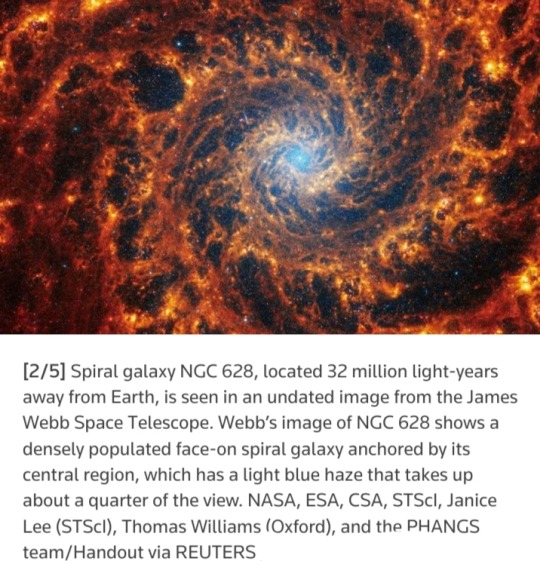
"Stars are born deep within dusty clouds that completely block out the light at visible wavelengths - what the Hubble Space Telescope is sensitive to - but these clouds light up at the JWST wavelengths.
We don't know a lot about this phase, not even really how long it lasts, and so these data will be vital for understanding how stars in galaxies start their lives," Williams added.
About half of spiral galaxies have a straight structure, called a bar, coming out from the galactic center to which the spiral arms are attached.
"The commonly held thought is that galaxies form from the inside-out, and so get bigger and bigger over their lifetimes.
The spiral arms act to sweep up the gas that will form into stars, and the bars act to funnel that same gas in towards the central black hole of the galaxy," Williams said.

The images let scientists for the first time resolve the structure of the clouds of dust and gas from which stars and planets form at a high level of detail in galaxies beyond the Large Magellanic Cloud and Small Magellanic Cloud, two galaxies considered galactic satellites of the sprawling Milky Way.
"The images are not only aesthetically stunning, they also tell a story about the cycle of star formation and feedback, which is the energy and momentum released by young stars into the space between stars," said astronomer Janice Lee of the Space Telescope Science Institute in Baltimore, principal investigator for the new data.
"It actually looks like there was explosive activity and clearing of the dust and gas on both cluster and kiloparsec (roughly 3,000 light years) scales.
The dynamic process of the overall star formation cycle becomes obvious and qualitatively accessible, even for the public, which makes the images compelling on many different levels," Lee added.
Webb's observations build on Hubble's.

"Using Hubble, we would see the starlight from galaxies, but some of the light was blocked by the dust of galaxies," University of Alberta astronomer Erik Rosolowsky said.
"This limitation made it hard to understand parts of how a galaxy operates as a system. With Webb's view in the infrared, we can see through this dust to see stars behind and within the enshrouding dust."
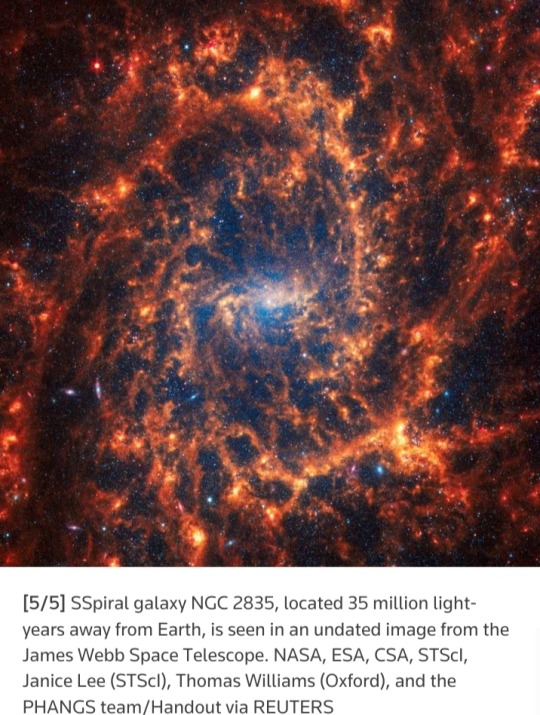
#James Webb Space Telescope#spiral galaxies#Milky Way#Physics at High Angular resolution in Nearby GalaxieS (PHANGS)#NGC5068#NGC1365#light year#Hubble Space Telescope#Near-Infrared Camera (NIRCam)#Mid-Infrared Instrument (MIRI)#astronomy#space#universe#cosmos#Large Magellanic Cloud#Small Magellanic Cloud#Space Telescope Science Institute
37 notes
·
View notes
Text
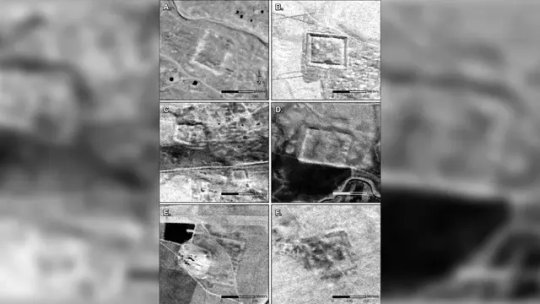
Spy Satellite Photos Reveal Hundreds of Long-Lost Roman Forts
Declassified photos captured by United States spy satellites launched during the Cold War have revealed an archaeological treasure trove: hundreds of previously unknown Roman-era forts, in what is now Iraq and Syria.
Many of those long-lost structures may be gone forever at this point, destroyed or damaged over recent decades due to agricultural expansion, urban development and war. Nevertheless, the discovery of the forts’ existence challenges a popular hypothesis established in the 1930s about the role of such fortifications along the ancient Roman Empire’s eastern border, researchers reported Wednesday in the journal Antiquity.
Based on the satellite views, the high number of forts and their widespread distribution hints that the forts may not have been erected to keep enemies out, as the decades-old theory suggested. Rather, the structures were likely built to ensure safe passage for caravans and travelers along routes that saw plenty of nonmilitary traffic. These forts, according to the study authors, were outposts and havens, not hostile barriers.
High-resolution images analyzed in the new study were taken during flyovers by multiple satellites belonging to two US military programs: the Corona Project (1960 to 1972) and Hexagon (1971 to 1986). Corona’s images were declassified in 1995, and Hexagon’s photos were released to the public in 2011.
Images from Hexagon and Corona are invaluable for archaeologists because they preserve snapshots of landscapes that have since undergone significant disruption, said lead study author Jesse Casana, an archaeologist and professor in the department of anthropology at Dartmouth College in New Hampshire.
“Agriculture and urbanization have destroyed a lot of archaeological sites and features to a shocking degree,” Casana said. “This old imagery allows us to see things that are often either obscured or no longer extant today.”
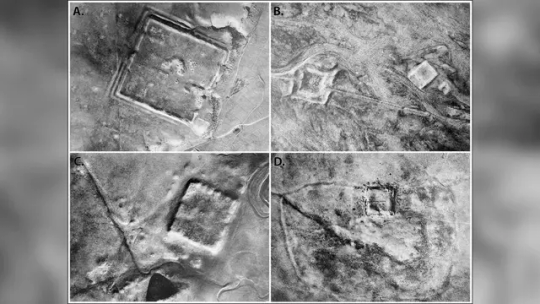

Spy satellite photos vs. the Poidebard survey
Satellite images are especially helpful for searches across the northern part of the Fertile Crescent in the Middle East — from the eastern coast of the Mediterranean to western Iran — because of the area’s archaeological importance and high visibility of the ground in photos, Casana added.
The research team pored over the images for signs of Roman forts, which have a distinctive square shape and walls that usually measure about 164 to 262 feet (50 to 80 meters) long. The scientists began their search using reference maps from an aerial survey of the region conducted in the 1920s and 1930s by French archaeologist and Jesuit missionary Father Antoine Poidebard. That survey was among the first to photograph archaeological sites from the air, and in 1934 Poidebard reported finding 116 Roman forts.
It was an unprecedented achievement. But nearly a century later, mapping Poidebard’s forts to satellite photos was challenging. Because his map wasn’t large-scale, it contained numerous spatial errors, Casana said. Poidebard also did not provide names or numbers for most of the forts he found, identifying them instead by their proximity to geologic features.
Those forts were aligned north to south along what was once the easternmost boundary of the Roman Empire, according to Poidebard. This arrangement, he claimed, was surely intended to guard against invaders from the east.
But Poidebard’s survey provided only a partial view of Rome’s ancient infrastructure, the researchers found. What he overlooked — and what the satellite photos revealed — was that the north-to-south line of 116 forts was actually only a narrow sliver of a cluster spreading from east to west and containing 396 fortified structures.
The forts spanned approximately 116,000 square miles (300,000 square kilometers), “extending from Mosul, on the Tigris River in Iraq, through Ninawa province, across the Khabur and the Balikh valleys, continuing to the semi-arid plains west of the Euphrates River, leading to western Syria and the Mediterranean,” according to the study.

Oases of safety for ancient Rome
When the archaeologists performed a second survey of an image subset, they found 106 more fortlike structures, hinting that further investigations will yield many more Roman forts. Based on excavations of other Roman sites in the region, the scientists estimated that the forts were built between the second and sixth centuries.
While Poidebard’s row of forts along the Roman Empire’s eastern front looked like a military fortification, this new evidence suggested that the forts collectively served a different purpose. Rather than presenting an impassable wall on a violent frontier, they provided oases of safety and order along well-traveled Roman roads.
Borders in this world “were places of dynamic cultural exchange and movement of goods and ideas,” not barriers, Casana said. And perhaps that perspective holds a lesson for the modern era, he added.
“Historically, as an archaeologist, I can say that there have been many attempts by ancient states to build walls across borders and it has been a universal failure,” Casana said. “If there’s any way that archaeology contributes to modern discourse, I would hope it is that building giant walls to keep people out is a bad plan.”
By Mindy Weisberger.

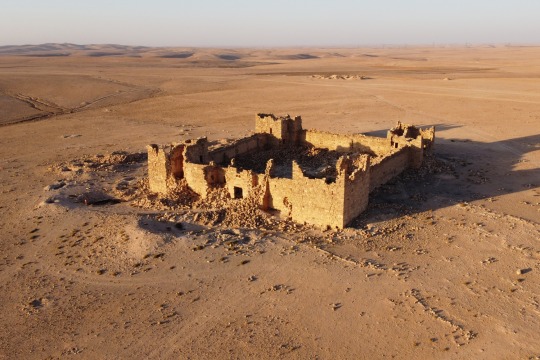
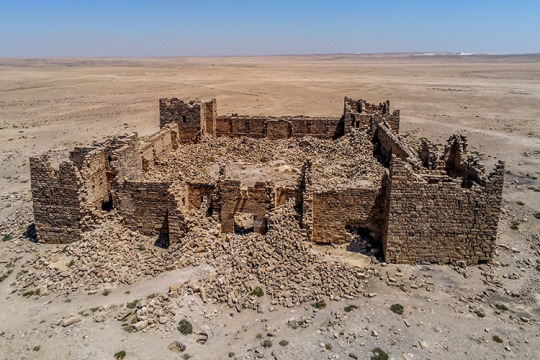
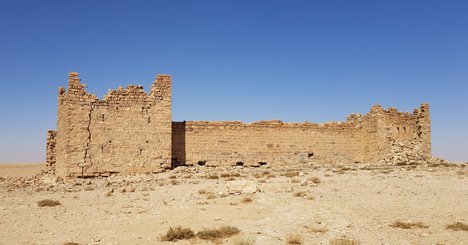
#Spy Satellite Photos Reveal Hundreds of Long-Lost Roman Forts#unknown Roman-era forts#iraq#syria#Roman Empire’s eastern border#ancient artifacts#archeology#archeolgst#history#history news#ancient history#ancient culture#ancient civilizations#roman history#roman empire#Qasr Bshi
49 notes
·
View notes

